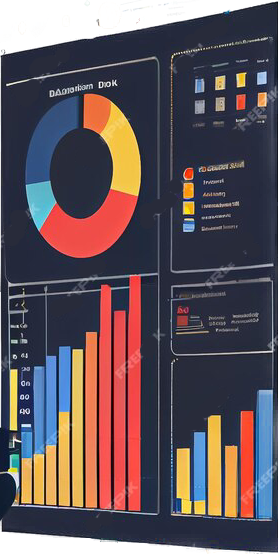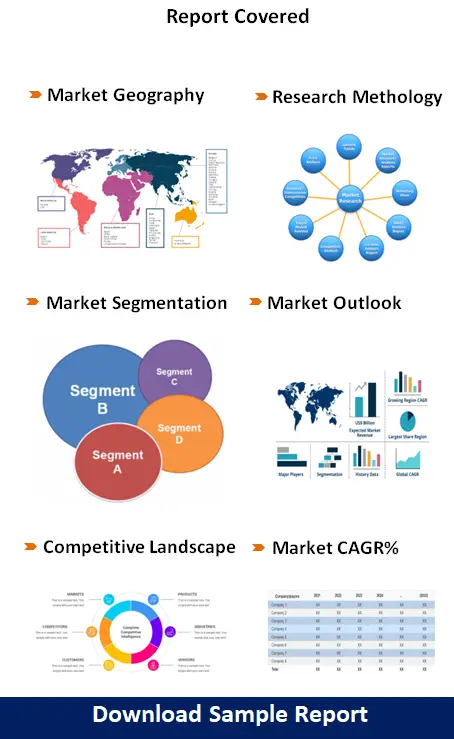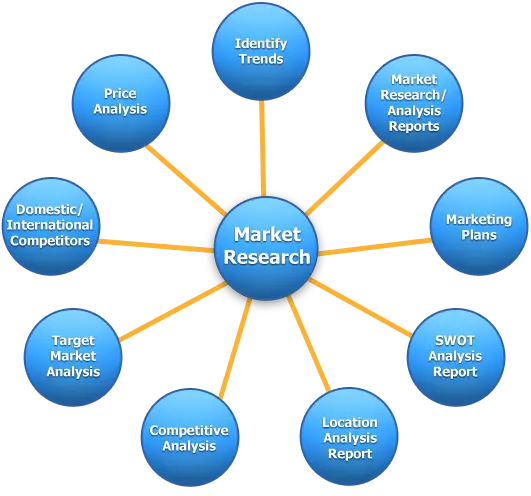Information Technology Market Growth CAGR Overview
According to research by Infinitive Data Research, the global Information Technology Market size was valued at USD 1201.6 Bln (billion) in 2024 and is Calculated to reach USD 1801.6 Bln (billion) by the end of 2032, growing at an anticipated compound annual growth rate (CAGR) of 6% during the forecast period 2024 to 2032. This projected growth is driven by its increasing adoption across Software & Services industries such as Power, Manufacture, IndustryThe Information Technology market has evolved into a transformative force driving innovation and operational efficiency across various industries worldwide. The pace of digital transformation continues to accelerate as businesses adopt cloud computing, artificial intelligence, and data analytics to improve decision-making and streamline operations. This evolution is further supported by government initiatives and increased investments in research and development, which foster a competitive and dynamic market environment. The competitive landscape is marked by a continuous influx of startups challenging established players, which contributes to rapid innovation cycles and diversified service offerings.
The interplay between technological advancements and evolving consumer demands has led to the development of more agile and robust IT infrastructures. Companies are not only focusing on delivering enhanced user experiences but are also investing in cybersecurity, ensuring that digital platforms remain secure and resilient. In this competitive climate, organizations are leveraging big data and the Internet of Things to optimize operational processes and develop innovative business models. This dynamic has paved the way for the emergence of ecosystem partnerships that extend the reach of IT solutions across various sectors.
Digital disruption is reshaping traditional business models, and the Information Technology market is at the forefront of this change. The rapid pace of technological innovation is compelling companies to continually reassess and refine their strategies, focusing on integrating cutting-edge solutions into their core operations. This shift towards a digital-first mindset is driving significant investments in IT infrastructure, ultimately leading to enhanced operational efficiency and improved customer satisfaction. The ongoing convergence of IT with other sectors such as healthcare, finance, and education further broadens the market's potential and scope.
A combination of market liberalization, increased digital penetration, and supportive regulatory frameworks are fueling growth in the Information Technology space. These factors, coupled with the emergence of new digital business models and the increased importance of data-driven decision-making, are creating a robust environment for innovation. Organizations are increasingly focused on leveraging technology to create value and gain competitive advantages, which further intensifies market competition. As technology continues to redefine the global business landscape, stakeholders are prioritizing strategic partnerships and investments that ensure sustained growth and resilience in the market.
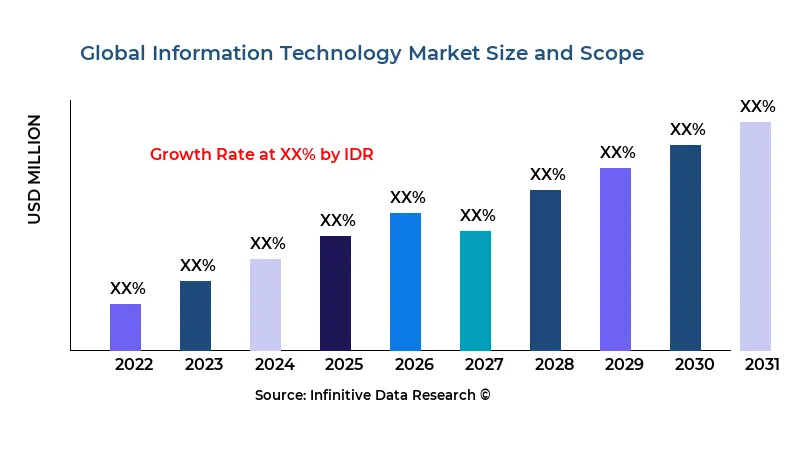
>>> Understand The Key Trends Shaping This Market:- Download PDF Sample
Information Technology Market Growth Factors
One of the primary growth drivers in the Information Technology market is the rapid adoption of cloud-based services. Businesses across the globe are transitioning from traditional on-premise infrastructures to cloud solutions, driven by the promise of scalability, flexibility, and cost efficiency. This shift is bolstered by advancements in network technology and the widespread availability of high-speed internet, which together create an enabling environment for cloud adoption. The scalability of cloud services allows organizations to quickly respond to fluctuating market demands, which is a key factor in the sustained growth of the IT sector.
Another significant factor is the rise in investments in research and development by both public and private sectors. These investments have spurred innovations in artificial intelligence, machine learning, and big data analytics, which are now integral components of modern IT ecosystems. The continuous evolution of these technologies has led to the development of smarter, more efficient systems that can handle complex tasks and provide deep insights into market trends. This technological progress not only improves operational efficiency but also opens up new revenue streams and market opportunities.
The Information Technology market is also being propelled by a shift in consumer behavior towards digital solutions and mobile connectivity. As end-users demand more personalized, responsive, and seamless digital experiences, companies are compelled to innovate and improve their IT services. This consumer-driven demand has resulted in significant investments in mobile applications, cybersecurity measures, and data analytics. These developments are creating a virtuous cycle where increased adoption of digital solutions leads to further innovation, driving sustained market growth and customer engagement.
A conducive regulatory environment is playing a crucial role in the expansion of the IT market. Governments around the world are implementing policies that support digital transformation and foster technological innovation. These initiatives often include incentives for research and development, data privacy regulations, and frameworks that encourage the use of emerging technologies in both public and private sectors. Such regulatory measures not only build consumer trust but also create a level playing field for new entrants and established companies alike, further catalyzing market growth.
Market Analysis By Competitors
- Siemens
- ABB
- Schneider Electric
- General Electric
- Mitsubishi Electric
By Product Type
- Switchgear
- Switchboard Apparatus
- Motor And Generator
- Relay
- Specialty Transformer
By Application
- Power
- Manufacture
- Industry
>>> Understand The Key Trends Shaping This Market:- Understand The Key Trends Shaping This Market:-
Information Technology Market Segment Analysis
Distribution Channel:
The distribution channel segment in the Information Technology market is characterized by a complex network of direct and indirect sales, online platforms, and channel partners. Companies are increasingly adopting a multi-channel distribution strategy to reach a broader audience while ensuring prompt and efficient service delivery. The digital sales channel, in particular, has seen remarkable growth, offering scalability and a more cost-effective approach compared to traditional distribution methods. In addition, partnerships with regional resellers and system integrators are critical in penetrating local markets and tailoring solutions to meet specific regional needs. The emphasis on customer support and after-sales services further enhances the value proposition and overall market penetration, creating a robust framework for distribution in an ever-evolving digital marketplace.
Compatibility:
Compatibility within the Information Technology market is a key segment that addresses the seamless integration of various IT systems, software applications, and hardware components. This segment is driven by the need for interoperability in an ecosystem where different technologies and platforms coexist. As businesses increasingly adopt hybrid IT environments, ensuring that new technologies are compatible with existing infrastructures becomes paramount. Companies are focusing on developing flexible solutions that can easily integrate with legacy systems while also accommodating future technological advancements. This focus on compatibility not only enhances operational efficiency but also reduces the risk of disruptions during the transition to new technologies, ultimately contributing to a smoother digital transformation process.
Price:
Pricing strategy in the Information Technology market plays a crucial role in market penetration and customer retention. The price segment reflects a wide range of offerings, from high-end, premium solutions to more affordable, entry-level products. As competition intensifies, companies are increasingly adopting value-based pricing models that emphasize the long-term benefits and total cost of ownership rather than just the initial acquisition cost. Flexible pricing structures, including subscription-based models and pay-as-you-go options, have become popular as they lower the barriers to entry and allow for more predictable budgeting. The competitive pricing environment is also spurring innovation, as companies strive to deliver more cost-effective solutions without compromising on performance or quality.
Product Type:
The product type segmentation in the Information Technology market encompasses a broad spectrum of offerings, ranging from hardware devices to complex software solutions and integrated IT services. This segment is characterized by rapid technological innovation, with companies continuously updating their product portfolios to incorporate the latest advancements in digital technology. The product diversity allows firms to cater to a wide variety of industries, each with its own unique requirements and challenges. Whether it is data centers, enterprise software, or consumer electronics, the product type segment is defined by its ability to offer tailored solutions that meet evolving market demands. As technology continues to advance, the product mix is expected to become even more diversified, ensuring that companies can capture new opportunities and maintain a competitive edge in the market.
| REPORT ATTRIBUTES | DETAILS |
|---|---|
| Study Period |
2019-2032 |
| Base Year |
2023 |
| Forecast Period |
2024-2032 |
| Historical Period |
2019-2022 |
| Unit |
Value (USD Billion) |
| Key Companies Profiled |
Siemens, ABB, Schneider Electric, General Electric, Mitsubishi Electric |
| Segments Covered |
By Product |
| Customization Scope |
Free report customization (equivalent to up to 3 analyst working days) with purchase. Addition or alteration to country, regional and segment scope |
>>> Overview of Market Analysis:- Download PDF Sample
Information Technology Market Regional Analysis
The Information Technology market demonstrates significant regional variation in terms of growth patterns, technological adoption, and consumer behavior. In North America, the market is highly advanced with robust IT infrastructure and substantial investments in research and development, driving the rapid adoption of cloud computing and artificial intelligence. The region's mature market is supported by strong regulatory frameworks that encourage innovation while maintaining high cybersecurity standards. Meanwhile, the market in Europe is characterized by a strong emphasis on data privacy and digital ethics, influencing both consumer behavior and corporate strategy. These regional dynamics contribute to diverse growth opportunities and competitive challenges, with each region presenting unique market conditions that companies must navigate.
Asia Pacific has emerged as one of the fastest-growing regions in the Information Technology market, fueled by rapid economic development, expanding internet penetration, and government initiatives aimed at digital transformation. Countries in this region are witnessing a surge in technology adoption, which is driving demand for advanced IT solutions. Local companies are increasingly entering the global arena, leveraging cost-effective innovations and an agile approach to meet consumer demands. This region is also characterized by a vibrant startup ecosystem that continuously challenges established players and contributes to a dynamic market landscape. The competitive environment in Asia Pacific is marked by rapid technological advancements, a focus on emerging technologies, and significant market potential.
In Latin America and the Middle East & Africa, the Information Technology market is experiencing steady growth, largely driven by increasing digitalization and improving internet connectivity. Governments in these regions are actively promoting digital literacy and investing in infrastructure to support the growth of the IT sector. Despite facing challenges such as economic volatility and regulatory constraints, these markets are witnessing robust growth trends, particularly in sectors such as mobile technology, e-commerce, and cloud services. The evolving market dynamics in these regions reflect a gradual transition from traditional business models to more modern, technology-driven frameworks, which is fostering an environment conducive to innovation and long-term growth.
The global spread of IT services and products has led to a more interconnected market where regional trends influence overall market performance. In every region, the adoption of digital technologies is reshaping industries and redefining the competitive landscape. Companies must therefore tailor their strategies to address local market nuances, ranging from regulatory compliance and consumer preferences to technological infrastructure and competitive intensity. This global interdependency underscores the importance of understanding regional differences, which can be pivotal in crafting effective market entry and growth strategies. As digital transformation continues to take hold across continents, the regional analysis remains a critical component of strategic planning for businesses operating in the Information Technology market.
global Information Technology market revenue (usd million) comparison by players 2024-2032
| Company/players | 2021 | 2022 | 2023 | 2024 | ... | (2032) |
|---|---|---|---|---|---|---|
| Siemens | XX | XX | XX | XX | XX | XX |
| ABB | XX | XX | XX | XX | XX | XX |
| Schneider Electric | XX | XX | XX | XX | XX | XX |
| General Electric | XX | XX | XX | XX | XX | XX |
| Mitsubishi Electric | XX | XX | XX | XX | XX | XX |
| Total | XX | XX | XX | XX | XX | XX |
global Information Technology market revenue (usd million) comparison by product type 2024-2032
Product Type
2023
2024
...
2032
CAGR%(2024-32)
Switchgear
XX
XX
XX
XX
XX
Switchboard Apparatus
XX
XX
XX
XX
XX
Motor And Generator
XX
XX
XX
XX
XX
Relay
XX
XX
XX
XX
XX
Specialty Transformer
XX
XX
XX
XX
XX
Total
XX
XX
XX
XX
XX
| Product Type | 2023 | 2024 | ... | 2032 | CAGR%(2024-32) |
|---|---|---|---|---|---|
| Switchgear | XX | XX | XX | XX | XX |
| Switchboard Apparatus | XX | XX | XX | XX | XX |
| Motor And Generator | XX | XX | XX | XX | XX |
| Relay | XX | XX | XX | XX | XX |
| Specialty Transformer | XX | XX | XX | XX | XX |
| Total | XX | XX | XX | XX | XX |
global Information Technology market revenue (usd million) comparison by application 2024-2032
Application
2023
2024
...
2032
CAGR%(2024-32)
Power
XX
XX
XX
XX
XX
Manufacture
XX
XX
XX
XX
XX
Industry
XX
XX
XX
XX
XX
Total
XX
XX
XX
XX
XX
| Application | 2023 | 2024 | ... | 2032 | CAGR%(2024-32) |
|---|---|---|---|---|---|
| Power | XX | XX | XX | XX | XX |
| Manufacture | XX | XX | XX | XX | XX |
| Industry | XX | XX | XX | XX | XX |
| Total | XX | XX | XX | XX | XX |
>>> Market Understand Through Graph And Chart:- Download PDF Sample
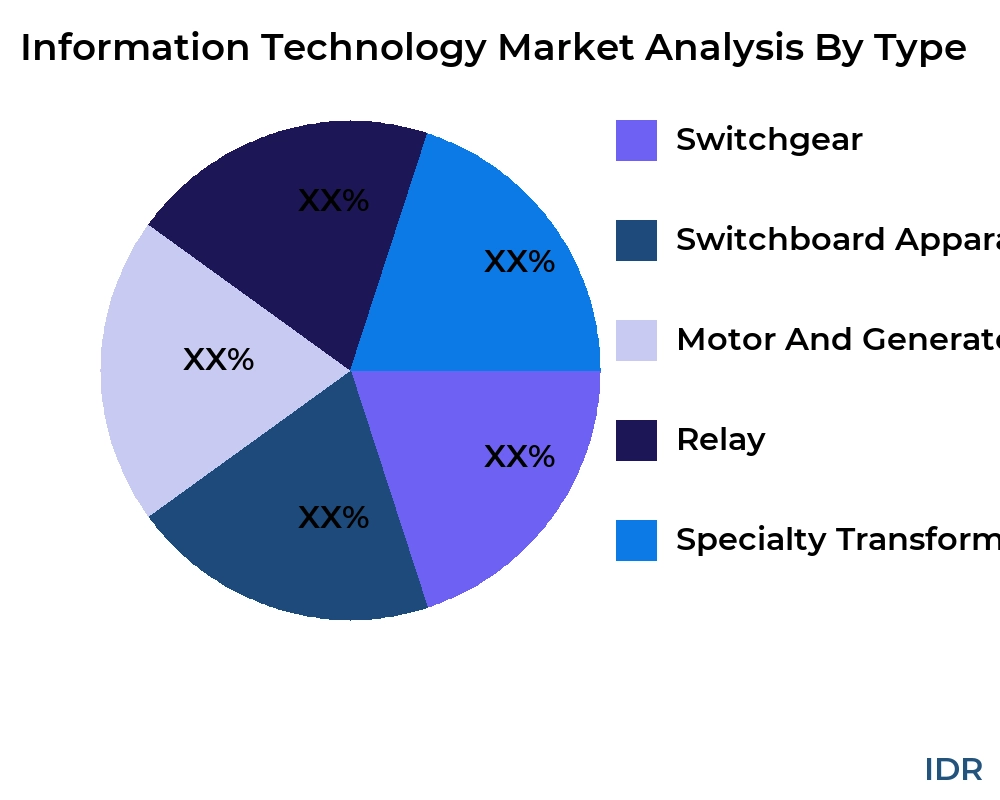

Information Technology Market Competitive Insights
The competitive landscape in the Information Technology market is characterized by rapid innovation, frequent technological disruptions, and a high degree of consolidation among leading players. Established industry giants continue to leverage their extensive resources and global reach to maintain their competitive positions, while agile startups are innovating at a rapid pace to capture emerging market segments. This dynamic interplay creates an environment where competitive differentiation is essential, with companies investing heavily in research and development to introduce novel solutions that address complex market needs. The overall market structure is highly competitive, with each player seeking to enhance its technological prowess and customer engagement strategies.
A notable trend in the competitive landscape is the increasing collaboration between large corporations and emerging technology firms. Strategic partnerships and joint ventures have become common as companies look to combine strengths and accelerate innovation. These alliances are aimed at integrating complementary technologies, which helps in expanding market offerings and achieving faster time-to-market for new products. This collaborative approach not only enhances the competitive positioning of individual players but also contributes to the overall evolution of the Information Technology ecosystem. In this rapidly changing environment, companies that can effectively balance competition and collaboration are likely to emerge as leaders in the market.
Market consolidation has been another significant factor shaping the competitive insights in the Information Technology sector. Numerous mergers and acquisitions have enabled major players to expand their portfolios, achieve economies of scale, and enhance their global footprint. This consolidation trend has led to increased market concentration, where a few key players dominate large portions of the market while smaller, niche companies cater to specialized segments. The competitive pressure in this scenario is intense, as companies are constantly seeking innovative ways to differentiate their products and services from those of their rivals. This dynamic has fostered an environment where continuous improvement and strategic agility are critical for sustained success.
In addition to consolidation and strategic partnerships, market competition in the Information Technology arena is also driven by rapid technological evolution and shifting consumer expectations. The advent of new technologies such as artificial intelligence, machine learning, and quantum computing is forcing companies to continuously upgrade their offerings and invest in next-generation solutions. This relentless pace of innovation demands that market players remain adaptive and forward-thinking, often reshaping their business models to better align with emerging trends. The competitive insights in this sector underscore the importance of strategic foresight, robust innovation pipelines, and the ability to swiftly respond to market disruptions.
Information Technology Market Competitors
United States:
-
IBM
-
Microsoft
-
Oracle
-
Cisco Systems
-
Intel
Germany:
-
SAP
-
Siemens
-
Deutsche Telekom
-
Bosch
-
Infineon Technologies
United Kingdom:
-
BT Group
-
ARM Holdings
-
Sage
-
Vodafone
-
BAE Systems
Japan:
-
Fujitsu
-
NEC Corporation
-
Hitachi
-
Toshiba
-
SoftBank
India:
-
TCS
-
Infosys
-
Wipro
-
HCL Technologies
-
Tech Mahindra
China:
-
Huawei
-
Lenovo
-
Alibaba
-
Baidu
-
Tencent
Information Technology Market Top Competitors
IBM:
IBM holds a significant position in the Information Technology market, demonstrating robust capabilities in cloud computing, artificial intelligence, and enterprise solutions. The company is renowned for its longstanding history and continued innovation in the tech industry. IBM’s strategic focus on hybrid cloud services has reinforced its competitive edge. Its global network and diversified portfolio enable it to address the needs of a wide range of industries effectively. The company invests heavily in R&D to maintain its leadership in technology breakthroughs. IBM also collaborates with multiple partners to enhance its service delivery and market reach. Its continued focus on cybersecurity and data analytics further solidifies its market position. Overall, IBM remains a trusted partner for businesses navigating digital transformation.
Microsoft:
Microsoft is a dominant force in the Information Technology landscape, known for its innovative software solutions and expansive cloud services. The company’s flagship products and services, including its Azure platform and Office 365 suite, cater to a global audience. Microsoft has demonstrated agility in adapting to market shifts, particularly with its emphasis on cloud-first strategies. Its commitment to research and development drives continuous product enhancements and service improvements. Strategic acquisitions have further broadened its portfolio and market influence. The company’s integration of artificial intelligence into its offerings has positioned it as a leader in digital transformation. With a focus on security and enterprise solutions, Microsoft continues to shape market trends. Its strong financial performance underlines its sustainable growth and competitive advantage.
Oracle:
Oracle is a key player in the Information Technology market with a focus on database management, cloud solutions, and enterprise software. The company has built a reputation for delivering robust and scalable solutions that support complex business processes. Oracle’s integrated cloud services and data management tools are widely adopted across industries. Its strategic investments in emerging technologies have enabled it to stay ahead in the competitive race. The company’s extensive partner network and global presence further enhance its market reach. Oracle continually upgrades its product offerings to align with evolving market requirements. Its focus on delivering high-performance computing solutions reinforces its position in the market. Overall, Oracle is well-positioned to capitalize on future market opportunities with its innovative solutions.
Cisco Systems:
Cisco Systems is widely recognized for its networking and communication solutions, serving as a backbone for modern digital infrastructures. The company has consistently demonstrated its expertise in developing scalable and secure networking products. Cisco’s focus on enhancing internet connectivity through advanced hardware and software solutions remains pivotal in its market strategy. Its investments in research and development allow it to lead in areas such as cybersecurity and cloud networking. The company’s comprehensive portfolio, spanning from routers to integrated communication platforms, addresses the diverse needs of global enterprises. Strategic partnerships and acquisitions further bolster its capabilities and market reach. Cisco continues to innovate in the rapidly evolving tech space, solidifying its role as a market leader. Its sustained focus on technology integration and customer-centric solutions keeps it ahead in the competitive landscape.
Intel:
Intel maintains a commanding presence in the Information Technology market, particularly in semiconductor manufacturing and microprocessor design. The company is synonymous with innovation in hardware, continually pushing the boundaries of processing speed and efficiency. Intel’s commitment to research and development has led to the creation of cutting-edge products that are integral to modern computing infrastructures. Its strategic investments in next-generation technologies like artificial intelligence and autonomous systems are designed to secure its future leadership. Intel’s extensive manufacturing capabilities and global supply chain are key competitive advantages. The company also collaborates closely with software and hardware partners to optimize performance and integration. Its proactive approach to market trends ensures a steady pipeline of innovative products. Overall, Intel’s technological advancements and strategic focus make it a cornerstone of the IT market.
Accenture:
Accenture is a global leader in IT consulting and professional services, renowned for its innovative approach to digital transformation. The company provides a wide array of services, including strategy, consulting, digital, technology, and operations services. Its extensive expertise in cloud computing and cybersecurity underpins its market position. Accenture’s ability to integrate emerging technologies into business strategies has enabled it to deliver bespoke solutions for a diverse client base. The company’s collaborative model leverages global talent and technological expertise to drive efficiency and innovation. Accenture’s focus on continuous improvement and customer engagement further solidifies its reputation in the competitive landscape. Its strong financial performance and market insights contribute to its leadership in driving digital transformation. Overall, Accenture remains a key player in shaping the future of the Information Technology industry.
The report provides a detailed analysis of the Information Technology market across various regions, highlighting the unique market dynamics and growth opportunities in each region.
- US
- Canada
- Mexico
- UK
- Germany
- France
- Italy
- Russia
- Spain
- Switzerland
- Austria
- Belgium
- Rest of Europe
- China
- Japan
- South Korea
- Indonesia
- Vietnam
- Philippines
- Australia
- Thailand
- Singapore
- Rest of APAC
- UAE
- Saudi Arabia
- Egypt
- South Africa
- Israel
- Rest of MEA
- Brazil
- Argentina
- Rest of Latin America
>>> Need A Different Region Or Segment? Download PDF Sample
Key Takeaways
- The global Information Technology market is expected to grow significantly from 2024 to 2032, driven by technological advancements, increasing demand, and government investments in urbanization.
- The market is characterized by a diverse range of manufacturers, product types, and applications, catering to different consumer needs and preferences.
- Regional insights highlight the unique market dynamics and growth opportunities in various regions, including North America, Europe, Asia-Pacific, Latin America, and the Middle East & Africa.
- The competitive landscape features key players who have created a dynamic and diverse market environment through collaborations, mergers and acquisitions, and innovative product developments.
- Market trends such as technological advancements, sustainability, customization, and digital transformation are shaping the growth and development of the Information Technology market.
- Despite the positive outlook, the market faces challenges such as regulatory compliance, high initial investment costs, and economic uncertainties.
- The report provides comprehensive coverage of market size, market share, growth factors, and strategic insights to help businesses navigate the dynamic Information Technology market and achieve long-term success.
By leveraging the information provided in this report, businesses can develop effective strategies, address market challenges, and capitalize on growth opportunities to ensure sustainable growth and long-term success in the global Information Technology market.
- Introduction
- Objectives of the Study
- Market Definition
- Research Scope
- Currency
- Key Target Audience
- Research Methodology and Assumptions
- Executive Summary
- Premium Insights
- Porter’s Five Forces Analysis
- Value Chain Analysis
- Top Investment Pockets
- Industry Trends
- Market Dynamics
- Market Evaluation
- Drivers
- Restraints
- Opportunities
- Challenges
- Global Information Technology Market Analysis and Projection, By Companies
- Segment Overview
- Siemens
- ABB
- Schneider Electric
- General Electric
- Mitsubishi Electric
- Global Information Technology Market Analysis and Projection, By Type
- Segment Overview
- Switchgear
- Switchboard Apparatus
- Motor And Generator
- Relay
- Specialty Transformer
- Global Information Technology Market Analysis and Projection, By Application
- Segment Overview
- Power
- Manufacture
- Industry
- Global Information Technology Market Analysis and Projection, By Regional Analysis
- North America
- US
- Canada
- Mexico
- Europe
- UK
- Germany
- France
- Italy
- Russia
- Spain
- Switzerland
- Austria
- Belgium
- Rest of Europe
- Asia Pacific
- China
- Japan
- South Korea
- Indonesia
- Vietnam
- Philippines
- Australia
- Thailand
- Singapore
- Rest of APAC
- Middle East
- UAE
- Saudi Arabia
- Egypt
- South Africa
- Israel
- Rest of MEA
- Latin America
- Brazil
- Argentina
- Rest of Latin America
- Global Information Technology Market-Competitive Landscape
- Overview
- Market Share of Key Players in the Information Technology Market
- Global Company Market Share
- North America Company Market Share
- Europe Company Market Share
- APAC Company Market Share
- Competitive Situations and Trends
- Coverage Launches and Developments
- Partnerships, Collaborations, and Agreements
- Mergers & Acquisitions
- Expansions
- Company Profiles
- Siemens
- Business Overview
- Company Snapshot
- Company Market Share Analysis
- Company Coverage Portfolio
- Recent Developments
- SWOT Analysis
- ABB
- Business Overview
- Company Snapshot
- Company Market Share Analysis
- Company Coverage Portfolio
- Recent Developments
- SWOT Analysis
- Schneider Electric
- Business Overview
- Company Snapshot
- Company Market Share Analysis
- Company Coverage Portfolio
- Recent Developments
- SWOT Analysis
- General Electric
- Business Overview
- Company Snapshot
- Company Market Share Analysis
- Company Coverage Portfolio
- Recent Developments
- SWOT Analysis
- Mitsubishi Electric
- Business Overview
- Company Snapshot
- Company Market Share Analysis
- Company Coverage Portfolio
- Recent Developments
- SWOT Analysis
List of Table
- Drivers of Global Information Technology Market: Impact Analysis
- Restraints of Global Information Technology Market: Impact Analysis
- Global Information Technology Market, By Technology, 2023-2032(USD Billion)
- global Switchgear, Information Technology Market, By Region, 2023-2032(USD Billion)
- global Switchboard Apparatus, Information Technology Market, By Region, 2023-2032(USD Billion)
- global Motor And Generator, Information Technology Market, By Region, 2023-2032(USD Billion)
- global Relay, Information Technology Market, By Region, 2023-2032(USD Billion)
- global Specialty Transformer, Information Technology Market, By Region, 2023-2032(USD Billion)
- global Power, Information Technology Market, By Region, 2023-2032(USD Billion)
- global Manufacture, Information Technology Market, By Region, 2023-2032(USD Billion)
- global Industry, Information Technology Market, By Region, 2023-2032(USD Billion)
List of Figures
- Global Information Technology Market Segmentation
- Information Technology Market: Research Methodology
- Market Size Estimation Methodology: Bottom-Up Approach
- Market Size Estimation Methodology: Top-down Approach
- Data Triangulation
- Porter’s Five Forces Analysis
- Value Chain Analysis
- Top investment pocket in the Information Technology Market
- Top Winning Strategies, 2023-2032
- Top Winning Strategies, By Development, 2023-2032(%)
- Top Winning Strategies, By Company, 2023-2032
- Moderate Bargaining power of Buyers
- Moderate Bargaining power of Suppliers
- Moderate Bargaining power of New Entrants
- Low threat of Substitution
- High Competitive Rivalry
- Restraint and Drivers: Information Technology Market
- Information Technology Market Segmentation, By Technology
- Information Technology Market For Live Attenuated, By Region, 2023-2033 ($ Billion)
- Global Information Technology Market, By Technology, 2023-2032(USD Billion)
- global Switchgear, Information Technology Market, By Region, 2023-2032(USD Billion)
- global Switchboard Apparatus, Information Technology Market, By Region, 2023-2032(USD Billion)
- global Motor And Generator, Information Technology Market, By Region, 2023-2032(USD Billion)
- global Relay, Information Technology Market, By Region, 2023-2032(USD Billion)
- global Specialty Transformer, Information Technology Market, By Region, 2023-2032(USD Billion)
- global Power, Information Technology Market, By Region, 2023-2032(USD Billion)
- global Manufacture, Information Technology Market, By Region, 2023-2032(USD Billion)
- global Industry, Information Technology Market, By Region, 2023-2032(USD Billion)
- Siemens: Net Sales, 2023-2033 ($ Billion)
- Siemens: Revenue Share, By Segment, 2023 (%)
- Siemens: Revenue Share, By Region, 2023 (%)
- ABB: Net Sales, 2023-2033 ($ Billion)
- ABB: Revenue Share, By Segment, 2023 (%)
- ABB: Revenue Share, By Region, 2023 (%)
- Schneider Electric: Net Sales, 2023-2033 ($ Billion)
- Schneider Electric: Revenue Share, By Segment, 2023 (%)
- Schneider Electric: Revenue Share, By Region, 2023 (%)
- General Electric: Net Sales, 2023-2033 ($ Billion)
- General Electric: Revenue Share, By Segment, 2023 (%)
- General Electric: Revenue Share, By Region, 2023 (%)
- Mitsubishi Electric: Net Sales, 2023-2033 ($ Billion)
- Mitsubishi Electric: Revenue Share, By Segment, 2023 (%)
- Mitsubishi Electric: Revenue Share, By Region, 2023 (%)
Infinitive Data Research provides comprehensive market research, offering in-depth market analysis to help companies understand their target market and industry competition. This research predicts the market acceptance of your brand and products, ensuring informed decision-making for business success.
Competitor Analysis in the Information Technology Industry
Conducting a competitor analysis involves identifying competitors within the Information Technology industry and studying their various marketing strategies. This comparative data allows you to assess your company's strengths and weaknesses relative to competitors, providing insights to enhance your market position.
Importance of Continuous Market Research
Consistently conducting market research is essential for minimizing risk at every stage of business operations. Information Technology market research enables you to collect qualitative and quantitative data, which, when properly analyzed, leads to wise decisions that align with user and customer needs. Below are some crucial lessons learned through the Information Technology market research process:
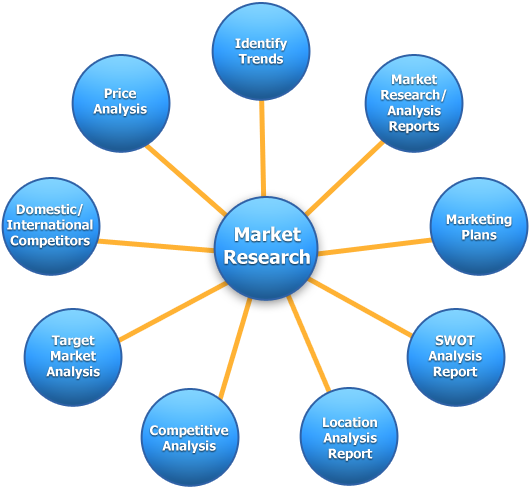
Key Dimensions of Information Technology Market Analysis
- Trend and Pattern Identification: Analyzing data to spot market trends and patterns.
- Pricing Analysis: Assessing keyword pricing strategies.
- Actionable Insights: Implementing insights derived from data analysis.
- Market Potential: Evaluating the potential of the Information Technology market.
- Competitor Analysis: Studying competitors' strategies and performance.
- Location Analysis: Assessing optimal locations for market penetration.
- Distribution Channels Analysis: Evaluating the effectiveness of distribution channels.
- Market Size and Growth Rate: Measuring market size and growth potential.
- Market Profitability: Assessing profitability prospects.
- Key Success Factors: Identifying critical factors for success.
- Cost Structure: Understanding the cost structure within the Information Technology industry.
Target Audience for the Report
This report is valuable for a diverse audience, including:
- Information Technology Market Manufacturers: To understand market dynamics and enhance production strategies.
- Investors and Financing Companies: To assess investment opportunities and risks.
- Information Technology Market Suppliers: To identify market demands and supply chain efficiencies.
Necessity of the Report
Making Crucial Business Decisions
Understanding the Information Technology market, competition, and industry landscape is vital for making informed business decisions. Without current and relevant market research, decisions may be based on outdated or irrelevant information, potentially harming the business.
Securing Investment Funds
Attracting investors requires demonstrating thorough market research. Investors need assurance that you understand the sector, current and potential competition, and whether your idea addresses a market need.
Identifying New Business Opportunities
Information Technology market research goes beyond understanding trends and consumer behavior. It identifies new revenue streams and opportunities for business pivots. These insights can lead to strategic changes in the business model, promoting growth and adapting to market challenges.
Avoiding Business Failures
Market research also plays a crucial role in risk mitigation. It can reveal when not to pursue certain actions, saving the company from potential losses in revenue, brand image, and more. This proactive approach is often overlooked but is essential for long-term success.
Conclusion
Infinitive Data Research's comprehensive Information Technology market research provides critical insights for making solid business decisions, securing investments, identifying new opportunities, and avoiding potential failures. Understanding market dynamics through continuous research ensures your company remains competitive and thrives in the Information Technology industry.

